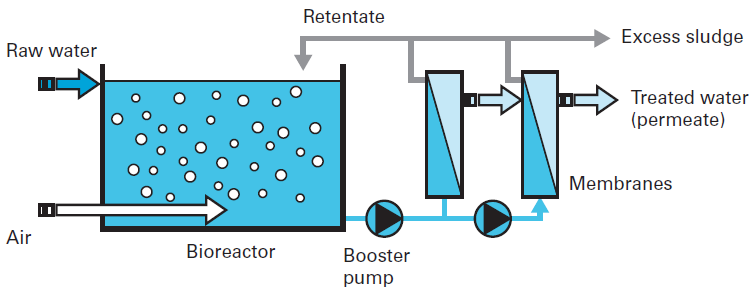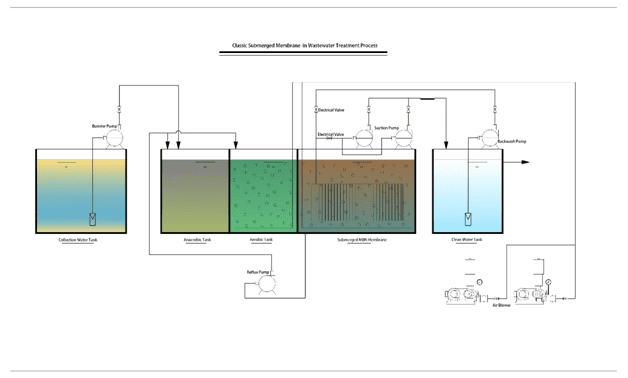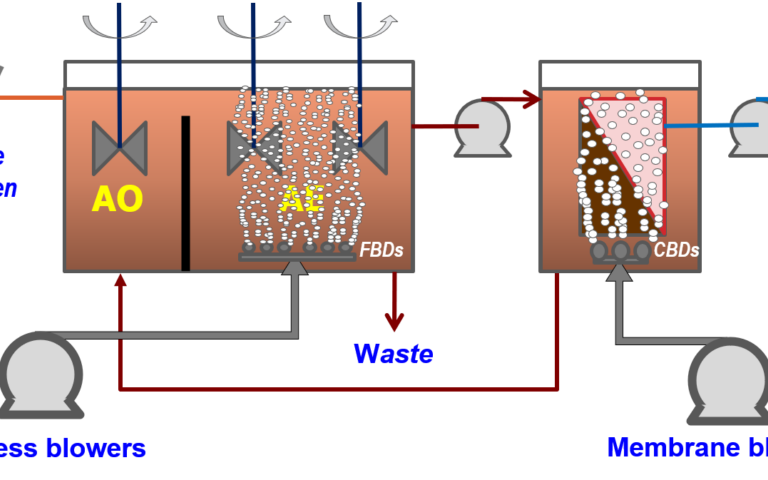Future Trends in Membrane Bioreactor Technology and Its Global Impact
Future Trends in Membrane Bioreactor Technology and Its Global Impact
Blog Article
Membrane Layer Bioreactors Described: Reliable Solutions for Clean Water
Membrane layer bioreactors (MBRs) have actually emerged as an advanced option for resolving journalism challenges of wastewater therapy. By integrating organic procedures with advanced membrane filtering, MBRs not only enhance the top quality of cured water but likewise decrease the spatial needs of treatment facilities. As environmental problems intensify, the duty of MBR modern technology in advertising lasting water management ends up being significantly significant. Nevertheless, the complexities of their operation, advantages, and possible applications merit a closer exam to totally understand their effect on the future of water therapy.

What Are Membrane Bioreactors?
Membrane bioreactors (MBRs) are innovative wastewater therapy systems that incorporate organic deterioration processes with membrane filtration technology. This combination enables the efficient elimination of contaminants from water, making MBRs a favored choice in numerous applications, consisting of metropolitan wastewater treatment and industrial effluent management.

Among the critical advantages of MBRs is their ability to produce premium effluent, usually suitable for reuse in watering or commercial procedures. Additionally, MBRs require a smaller impact contrasted to traditional therapy systems, making them optimal for urban settings where area might be restricted.
Furthermore, MBRs can successfully handle differing influent lots and are much less at risk to the impacts of hazardous shocks. These qualities contribute to their growing popularity as a sustainable service for attending to the increasing need for tidy water while reducing environmental influences.
How Membrane Layer Bioreactors Job
While the operation of membrane layer bioreactors (MBRs) may appear facility, it basically focuses on the harmony in between biological procedures and membrane layer filtration. MBRs incorporate a biological therapy procedure, generally activated sludge, with a membrane splitting up system to deal with wastewater efficiently.
In an MBR system, wastewater is very first introduced right into a bioreactor where bacteria deteriorate natural matter and other pollutants. The biological activity reduces the concentration of toxins while promoting the growth of biomass. Following this biological treatment, the blended liquor undergoes membrane layer purification, which can be microfiltration or ultrafiltration, depending on the desired effluent quality.
The membrane layers act as a physical obstacle, enabling water and small solutes to pass while maintaining suspended solids and bigger molecules. This enables the system to maintain a high concentration of biomass within the activator, boosting the therapy performance.
Additionally, the continuous splitting up of cured water from the biomass promotes a compact layout and lessens the footprint of the treatment facility. On the whole, the mix of organic destruction and membrane layer filtration in MBRs causes reputable and efficient wastewater therapy, guaranteeing high-quality effluent suitable for various applications.
Benefits of MBR Modern Technology
Among the vital advantages of membrane layer bioreactor (MBR) technology is its capability to create top notch effluent with a substantially lowered footprint contrasted to conventional wastewater treatment approaches. MBR systems effectively combine biological treatment and membrane purification, causing premium removal of impurities, consisting of put on hold solids, virus, and raw material. This ability results in effluent that frequently fulfills or goes beyond rigorous regulative requirements for reuse and discharge.
Furthermore, MBR technology enables greater biomass concentrations, which improves the therapy efficiency and minimizes the needed reactor volume. This compact style is specifically helpful in metropolitan areas where space is limited. The operational adaptability of MBR systems also implies they can adjust to varying influent qualities and flow rates, making them ideal for a wide variety of applications.
Furthermore, the lowered sludge manufacturing connected with MBR processes contributes to lower functional and upkeep prices. The membranes function as a physical obstacle, decreasing the threat of blocking and allowing longer functional durations in between cleansing. In general, the benefits of MBR modern technology make it an attractive solution for sustainable wastewater therapy, attending to both environmental issues and the requirement for reliable resource administration.
Applications of Membrane Bioreactors
With their versatility and efficiency, membrane bioreactors (MBRs) discover applications throughout different fields, consisting he has a good point of community wastewater treatment, industrial procedures, and even water improvement. In municipal settings, MBRs provide a portable service for treating wastewater, effectively removing pollutants while concurrently producing top quality effluent that meets rigorous regulative standards. This makes them particularly appropriate for areas with restricted room.
In commercial applications, MBR technology is utilized for treating process water, specifically in sectors such as food and beverage, drugs, and petrochemicals. These check these guys out industries gain from MBRs' ability to handle high organic lots and their efficiency in recovering important sources from wastewater, such as nutrients and water.
Furthermore, MBRs play an essential duty in water reclamation efforts, allowing the reuse of dealt with wastewater for watering, industrial processes, and even as potable water after more therapy (Membrane Bioreactor). Their performance in removing microorganisms and contaminants makes them a trusted option for making certain water quality in different reuse applications
Future of Water Treatment Solutions
The future of water therapy remedies is poised for transformative innovations driven by technical technology and raising environmental understanding. As worldwide water scarcity ends up being a pushing concern, brand-new methods, consisting of membrane bioreactor (MBR) systems, are established to play an essential role in improving the efficiency and sustainability of water therapy procedures.
Emerging modern technologies such as expert system and artificial intelligence are anticipated to enhance therapy procedures, permitting real-time monitoring and predictive maintenance. This will boost the general reliability and efficiency of water therapy centers. Developments in membrane layer products, such as graphene and nanofiltration, assure to boost permeation prices and lower fouling, leading to reduced power consumption and functional prices.
Additionally, the integration of renewable power resources right into water therapy plants will certainly contribute to greener practices. The circular economic climate version will certainly also get grip, encouraging the recovery of useful resources from wastewater, such as nutrients and power.
Conclusion

Membrane layer bioreactors read this post here (MBRs) have emerged as an advanced remedy for dealing with the pressing challenges of wastewater therapy. By integrating biological processes with advanced membrane layer filtration, MBRs not just enhance the top quality of cured water but also lower the spatial demands of treatment centers.One of the key benefits of membrane layer bioreactor (MBR) modern technology is its capability to create premium effluent with a substantially lowered footprint compared to traditional wastewater therapy techniques.With their flexibility and performance, membrane bioreactors (MBRs) locate applications across numerous industries, including community wastewater therapy, commercial processes, and also water improvement.In final thought, membrane bioreactors represent a considerable improvement in wastewater treatment innovation, integrating organic procedures with effective membrane filtering to produce high-quality effluent.
Report this page